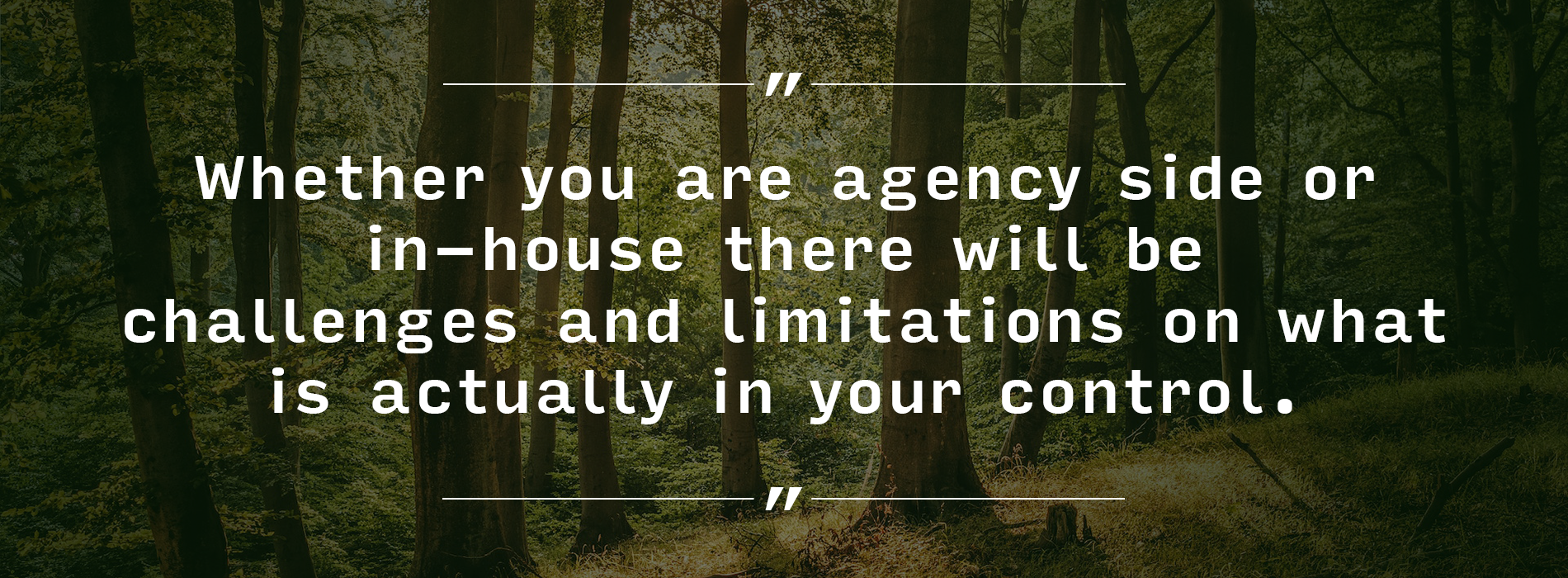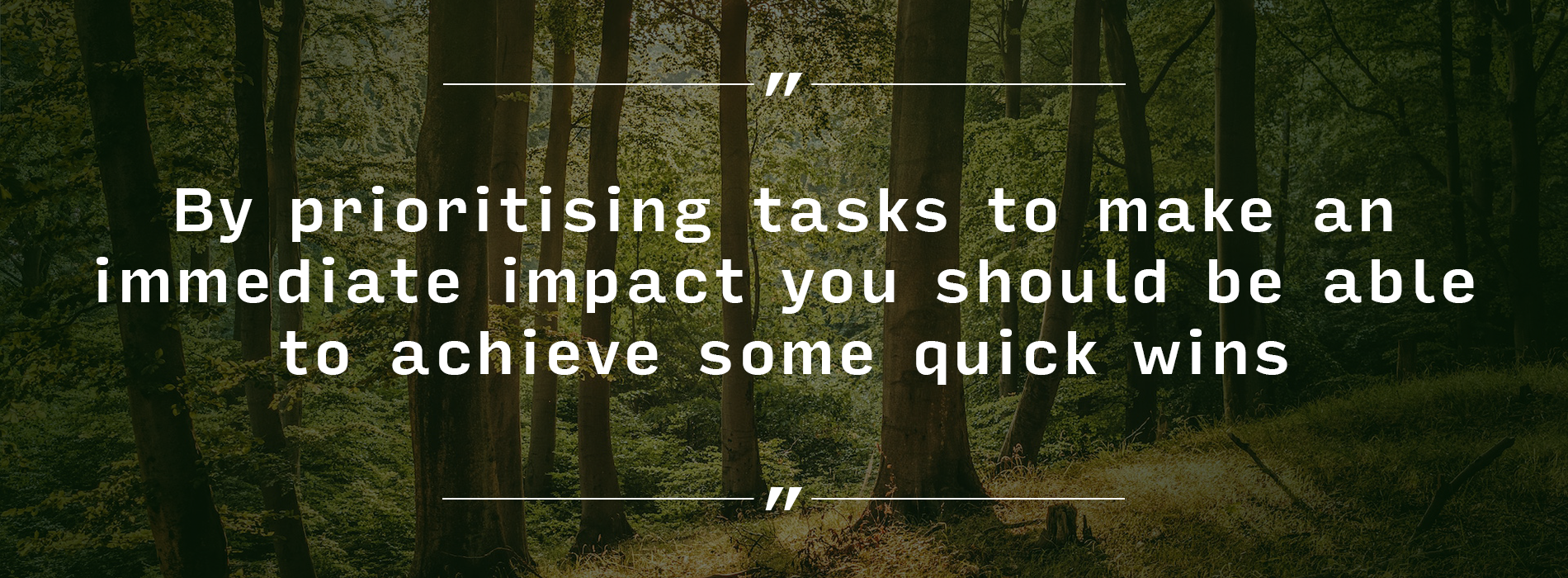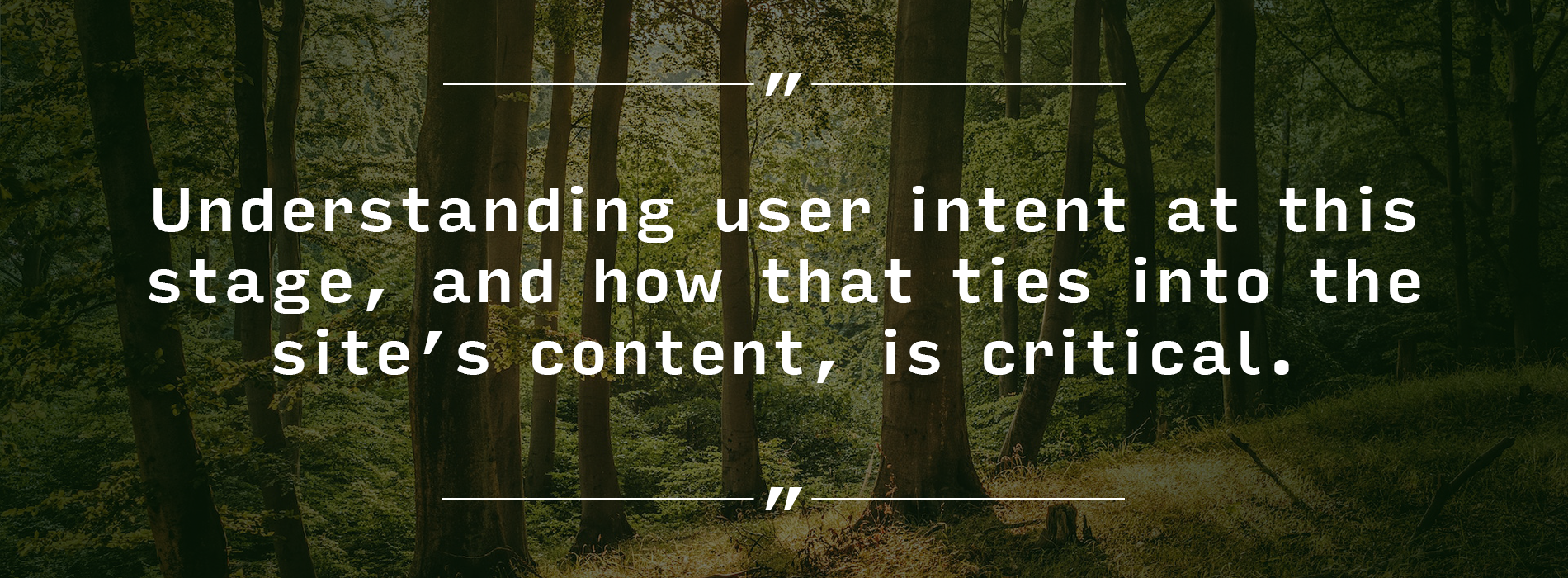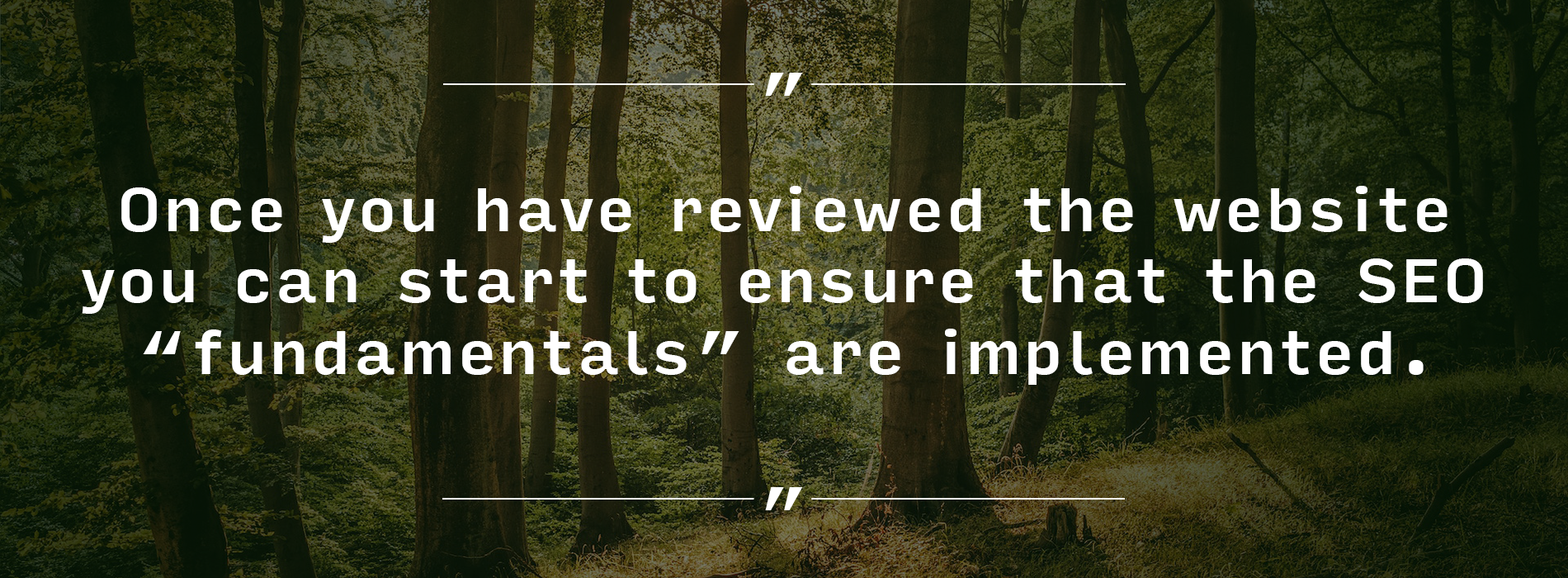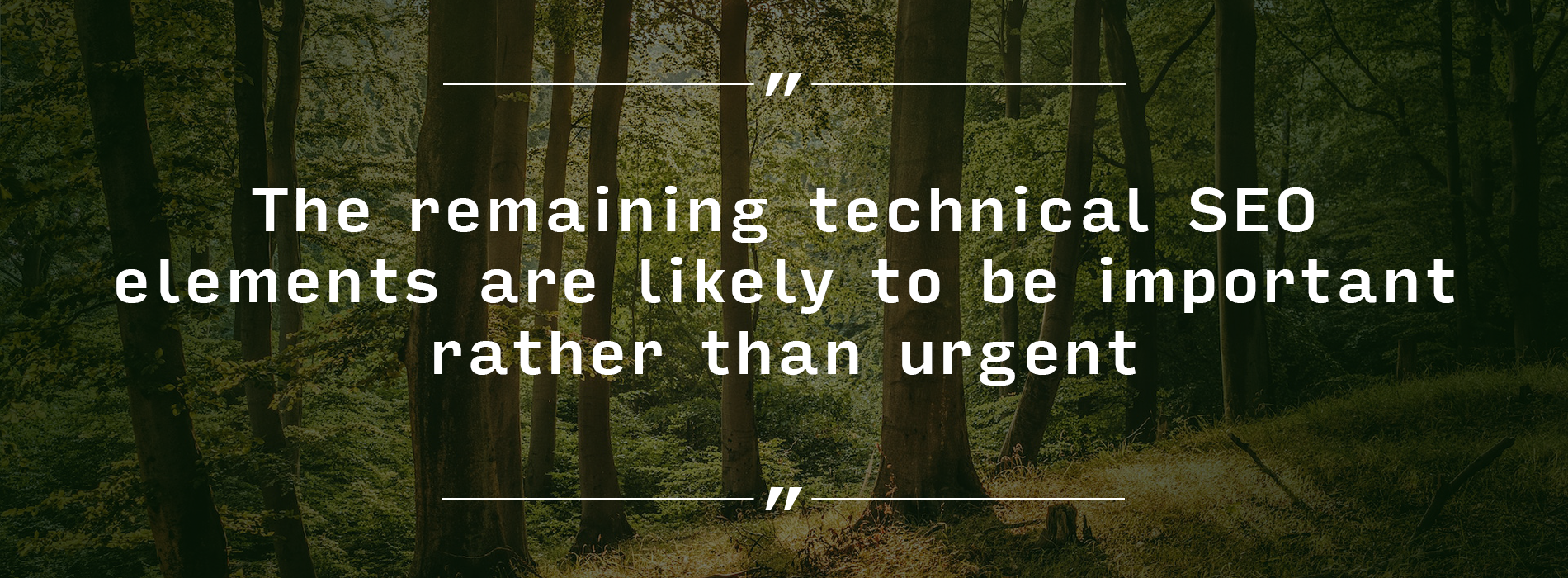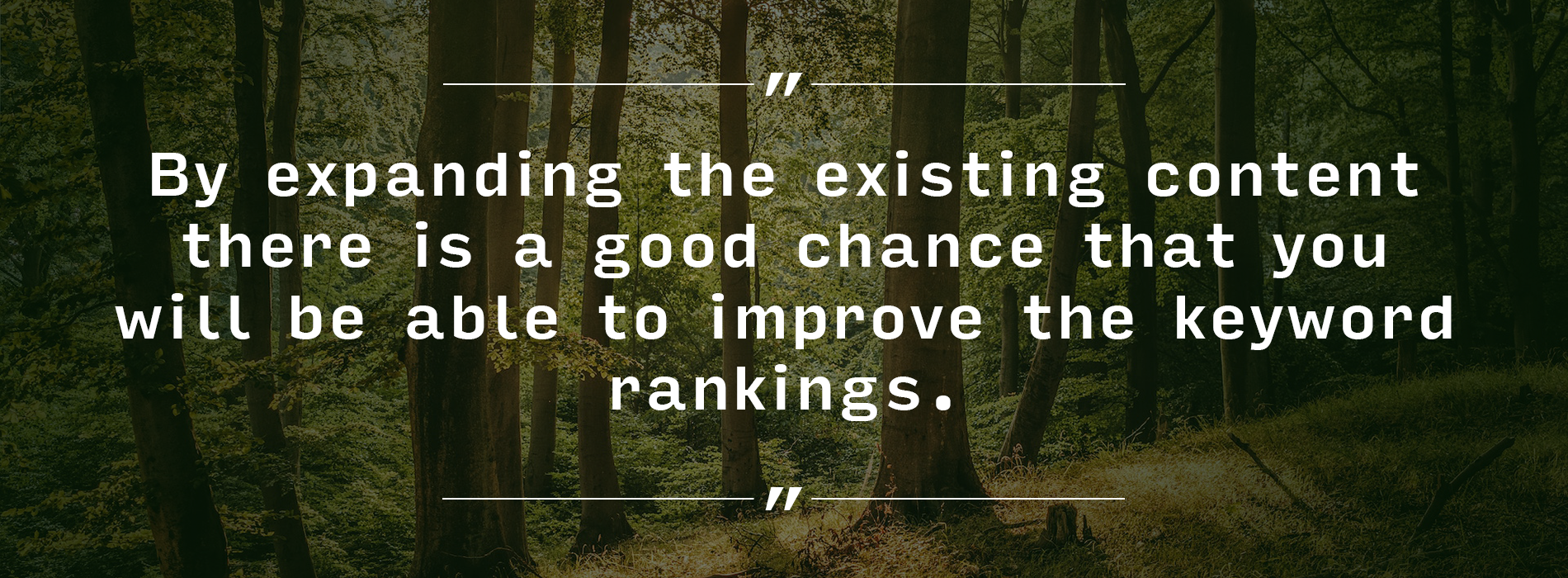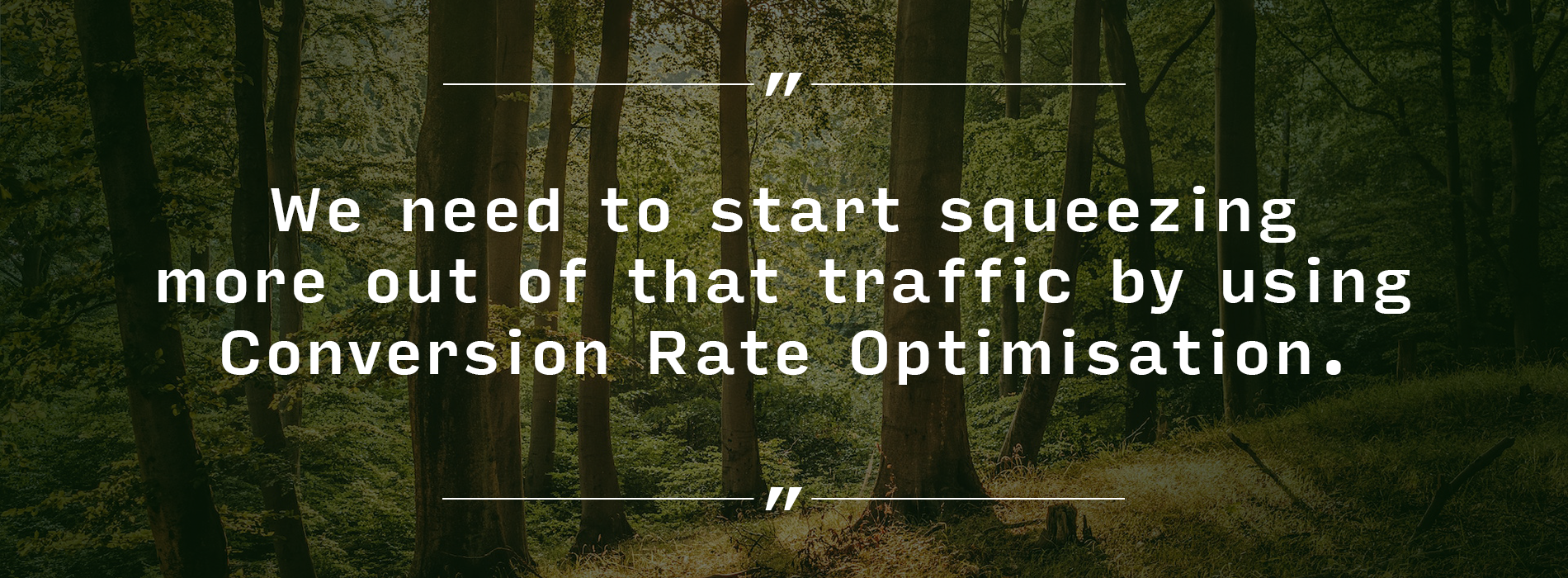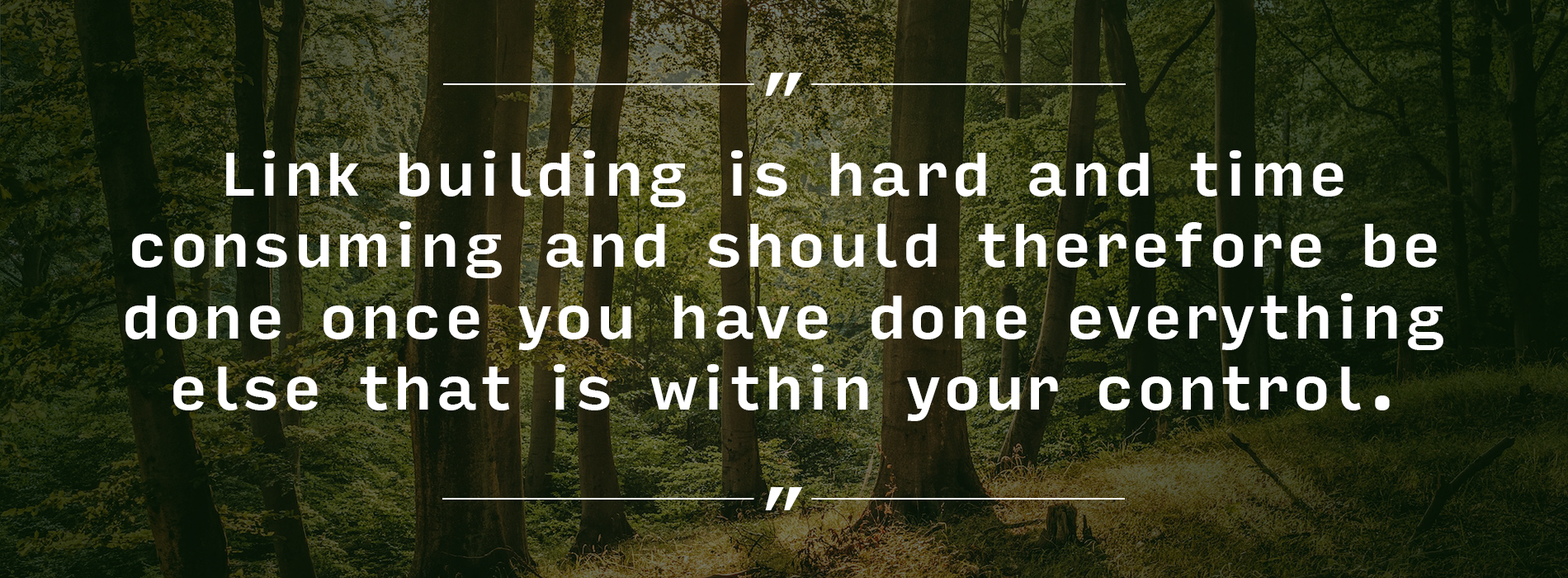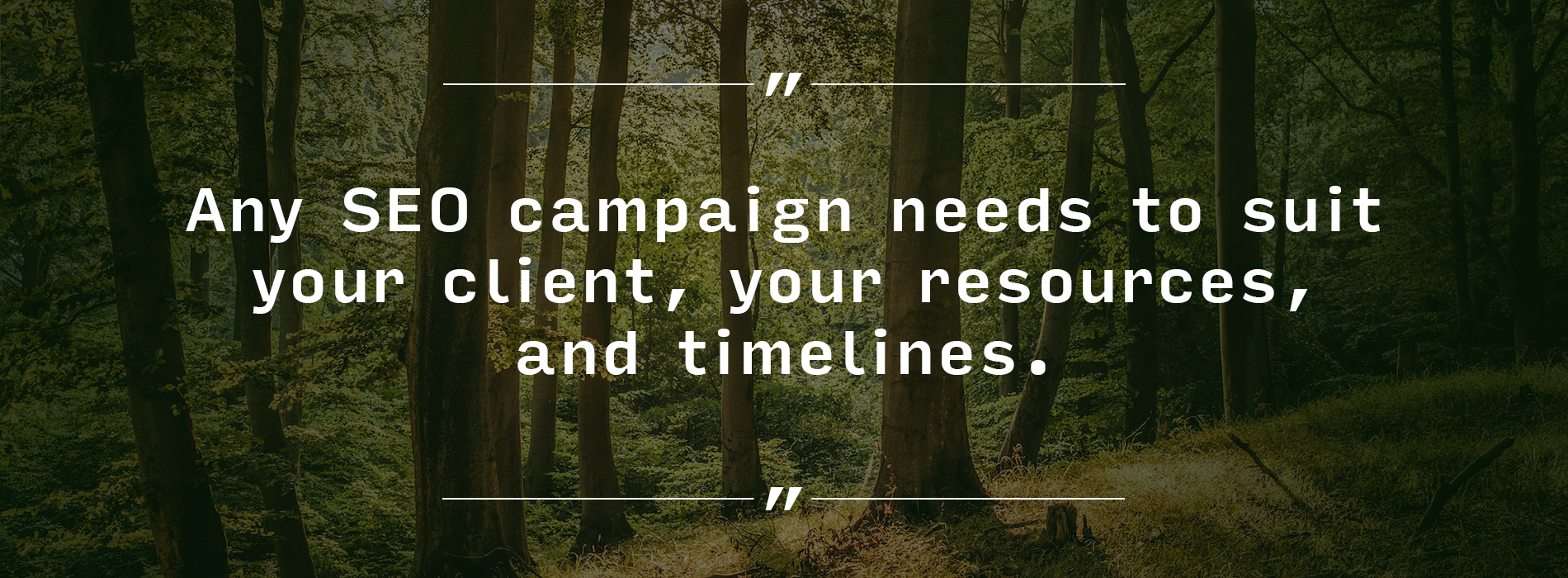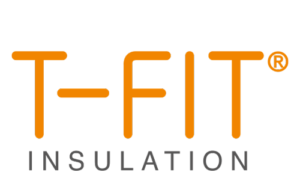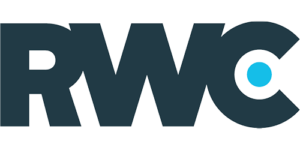How to Structure an SEO Campaign
The internet is full of SEO advice, much of it is really good quality (although there is a lot of it that is awful and/or dubious, so do check your sources!) and if you want a list of what we consider to be some of the best SEO resources out there, we have a post dedicated to our most trusted information sources.
However, while it is fairly easy to find out how to best conduct a certain task, or even check lists to ensure you are optimising a page correctly, it is harder to find practical advice on how to structure an SEO campaign.
One of the reasons for this is that each campaign is different. There are a number of factors that impact a campaign structure, including the quality of the website, its content, the budget, size of the team working on the campaign, the authority of the website, the client’s vertical or sector, and the appetite for change within the company, just to name a few.
However, this doesn’t mean that we can’t put an SEO campaign structure in place, we just have to adapt it to each website or client.
Before we look at how our SEO consultants structure a campaign it would be worth going back to basics and talk about the “Three Pillars” of SEO.
Now, a quick note on these SEO pillars – some in the SEO industry see them as four pillars, and some run them at 5, 6 or 7 pillars (maybe we’ll create some all encompassing content that breaks them down into the 78 pillars of SEO, just to make sure we’re creating some solid skyscraper content…) but in our book, we keep them at the more traditional 3 pillars, both for ease of understanding, simplicity of execution, and more effective campaign planning.
Three pillars of SEO
- On-Page Content (we roll content/copy and on-page optimisation into one pillar)
- On-Site Technical SEO
- Off-Page SEO Authority Building
Different digital marketing agencies, organisations, and SEOs call these three pillars different things, or include slightly different elements in each, but, in our mind, they boil down to these elements:
On-Page Content
What you say on your site (words, copy, content of any type), optimising that content for keyword topics/themes (both long-tail and trophy type keywords), more technical on-page content optimisation elements (e.g. <title> tags, meta descriptions, header tags, image tags, internal linking, file names etc.).
On-Site Technical SEO
Covers anything related to the more technical side of the site’s performance (in the eyes of search engines, and taking into account mobile user experience elements that influence Google rankings, for example Core Web Vitals etc.).
This can include a huge range of different technical SEO elements, including (but definitely not limited to) site architecture, structured data, duplicate content/canonicals, hreflang tags, 301 redirects/404 error pages, robots.txt & X-robots, URL structures, site speed, mobile usability (including Core Web Vitals elements such as largest contentful paint, first input delay & cumulative layout shift), menu structure, http/https issues, orphaned pages, www and non www domain issues, hosting problems, the list goes on and on and on and on….
Off-Page SEO Authority Building
Simply put, this is generating awareness (for both Google and human users) of your site, company, or products, on sites/places other than your website.
This falls into two (ish..) separate categories: Inbound links to your site and brand/product awareness (think more traditional marketing outreach and activities).
Inbound links are links from third party websites to your website, we won’t go into detail here as there is ample content elsewhere online that covers this area, for example Moz’s SEO beginner’s guide to link building as well as our own articles on ethical SEO link building tactics and 7 link building tactics that still work.
Standard SEO cautionary warning here – NEVER undertake unethical or black hat link building tactics that go against Google’s guidelines in order to improve rankings for yours or your client’s site, you risk serious penalties from Google, and probably death, or even worse.
The second part of off-site can include a range of different elements, for example, social media marketing, content marketing, podcasts, PR, Local SEO (Google My Business and citations), forums, influencer marketing, events, guest posting, content syndication – essentially old school marketing outreach and brand building, but a key element of getting your business, and its website, flying.
OK, so that covers the three pillars of SEO in a little bit of (top level) detail. Understanding these three strategic elements will help you to recognise when to implement relevant, and related, campaign activities within your plan, as well as understanding when they can overlap/run concurrently, and when they need to be the core focus.
Now we can move on to SEO campaign structure!
Building a structure
So, we know the three areas of SEO and your reading on the topic has provided a lot of how-tos, from how to conduct keyword research and writing meta tags through to a 63-point checklist to check the SEO of a page and link building, but what do you do first?
It’s at this point we need to start prioritising. Yes, links are critical to a successful SEO campaign but good quality links are really hard to get, and take a long time to earn. For that reason we always focus on two things first:
- Focus on what is in your control
- Start with low hanging fruit for immediate impact, then go for long term benefits.
Let’s take a closer look at what this means in more detail.
Focus on what is in your control
The situation that you find yourself in will have a significant impact on what is in your control. Are you “in-house” and able to work directly with your website developers? Do you have a team that can produce content? Or are you the sole person responsible for digital marketing in the company and need to argue the case for dedicating limited resources to the website?
Conversely, are you agency side and need to go through the client to have their developers make changes? Does everything need signing off by everyone in the client company?
Whether you are agency side or in-house there will be challenges and limitations on what is actually in your control. Your job is to work out what is, and then you can move on to the second point…
Start with low hanging fruit for immediate impact
Your to-do list at the start of an SEO campaign can be extremely long, so putting some sort of order to that will not only help you stay on track but will help keep your client/boss onboard and bought into the project.
At the top of your list should be the tasks that will have the greatest impact on short term results. This could be optimising the homepage and top five pages, or rewriting the title tags, or removing duplicate content, it all depends on your client and the needs of the website.
Given the range of different issues/elements that can come up when an SEO first starts looking at a website, one key trick is to simply list the main actions/fixes that are needed and then rate them based on the following criteria:
- Who can implement them?
- How complicated/involved are they?
- What impact will the fix or change have on the overall performance of the site in search engines?
If you, or a member of your team, can fix/implement them, if they are reasonably simple to do (even incredibly dull and large 301 redirect maps are pretty simple to do, they just take a bit of time) and if they’ll quickly (in SEO terms, “quick” is a bit of a misnomer to be honest) have an impact on the website’s performance in search, then do them first.
Other elements are important, things like Core Web Vitals for example, but not necessarily urgent.
A devastated site with badly set up 301 redirects won’t start performing much better, even if it passes all the Web Vitals benchmarks, so don’t waste your time fixing first input delays (FIDs), sort out the redirects as a priority.
It sounds straightforward, but you’ll be surprised how often an experienced SEO will spend weeks discussing (or fighting!) with developers to get something complicated or technical done, whilst totally overlooking something basic, for example, such as the site was launched without correctly implemented 301 redirects, or that there were pages missed leaving old pages that had solid authority and rankings (and inbound links from high value domains) as 404 pages, or that the site moved from www to non-www, and that was badly managed, or that the majority of the pages have default <title> tags (“About”, “Team” etc.), and even basic elements such as hreflang tags or canonicals pointing at incorrect languages/URLs.
By prioritising tasks to make an immediate impact you should be able to achieve some quick wins which will help keep your client or wider company engaged and positive about the campaign. Something that will come in useful when the inevitable slowdown or large development task happens.
A Typical Structure
So, we have talked about the three main areas of SEO and how to prioritise tasks, now it’s (finally) time to structure the SEO campaign.
Stage 1: SEO Research
Any campaign needs to start with a plan and this research phase allows you to scope out the work that’s needed.
Keyword Research
In order to know what you are optimising the website for you need to do the research. The final list of target keywords will inform the rest of your campaign so it is worth spending time on this to make sure you understand the client and their audience.
It is also important to be able to identify which of your target keywords are informational, and which are transactional – understanding user intent at this stage, and how that ties into the site’s content, is critical.
Content Gap Analysis
Once you know the keywords you are targeting you need to know how your website is performing on these terms. Content Gap Analysis will help you see where you are ranking, which pages are ranking, and the pages that should be ranking.
You can also roll in an element of competitor research during this phase whilst looking at the SERPs, and who is ranking for which terms (and why).
On-Site Technical SEO review
By conducting a technical SEO review at the start of the campaign you will be able to see if there are any major issues that need fixing as a matter of urgency and prioritise the work accordingly (as discussed above).
Stage 2: On-Page Content Optimisation
Once you have reviewed the website you can start to ensure that the SEO “fundamentals” are implemented and dealt with. Starting with the content:
This phase of the project will include, but not be limited to, the following:
- Optimising <title> tags and meta descriptions as required
- Headers (H1s, H2s etc.)
- Focus each primary page’s content on your target keywords
- Include internal anchor text links to other relevant pages
- Image optimisation
- Etc.
Work on your content in a priority order, e.g.: homepage->primary service or product pages->informational pages etc. etc.
For very large sites with huge amounts of content, schedule out the work – it can run over the coming months if needed, just get the primary pages done first, then move onto technical SEO, whilst content optimisation carries on in the background.
Stage 3: On-Page Technical SEO
Once the basic on-page fundamentals are dealt with you can look to other quick wins that may have been highlighted in the technical review.
You’ll have hopefully sorted out any serious technical SEO issues at the start of your campaign activity, so the remaining technical SEO elements are likely to be important rather than urgent, but can still have a very positive impact on performance.
These may include:
- Canonical links
- Sitemaps
- Robot.txt
- URLs
- DNS issues (www. and non-www. redirect)
- Resolving Search Console Errors
- Reviewing and configuring redirects
- Reviewing and fixing site structural issues
Stage 4: Focus on Content
By this point you should have a website that works well for SEO. The existing content is optimised for its primary keywords, the technical elements work well, and it is free from major errors.
Now it is time to return to the Content Gap Analysis and start acting on the findings. Generally, this will be done in two phases.
Phase 1 – Expand existing content
If we return to our principle of low hanging fruit it is often easier to expand on content that you already have than create new content. With that in mind the first phase of the content plan should be to see which pages would benefit from more content.
By expanding the existing content there is a good chance that you will be able to improve the keyword rankings through providing greater detail, a richer user experience, or simply having more content to insert more keywords around your keyword theme for that page/section.
Phase 2 – Create new content to fill the gap
Once you have expanded the existing content the time has finally come to create new content to target new keywords. By increasing the number of keywords your website can target you will be able to appear in front of a wider audience and in turn increase traffic to the website.
Create a content plan so that you can schedule in the copywriting over a set period (3 months, 6 months etc.) and do your best to stick to it!
Stage 5: Conversion Rate Optimisation
Once you have a page dedicated to each of your keywords outlined in the keyword research and content gap analysis and are pulling in more traffic we need to start squeezing more out of that traffic by using Conversion Rate Optimisation (CRO) techniques.
This means improving the conversion rate of the website. This can be achieved through a review and use of the following:
- Calls to action (CTAs)
- Contact forms
- Clear user journeys
- Gated content/increased leads
- Heatmap Tracking
- GA/GA4 & Search Console Data Analysis
As well as making sure calls to action are easy to spot, contact forms are simple, user journeys are clear, you can start to review page layout and content through A/B testing and user surveys.
Stage 6: Building Authority
Once the website has a solid technical SEO foundation, improved and updated content and the conversion issues are addressed, you will finally be in a position to look at link building and improving the authority of the website.
How to best do this is not the focus of this post, there are plenty of resources out there to help work out which link building method is best for your client, your budget, your campaign, and niche. However, whichever route you take, link building is hard and time consuming and should therefore be done once you have done everything else that is within your control.
Of course, by leaving link building to this part of the SEO campaign you should have deep knowledge of your client and website, which will make finding the right strategy significantly easier.
Summary
There we have it, how to structure an SEO campaign. Easy! However, before you go, this wouldn’t be a post about SEO without adding some caveats and “it depends”…
Any SEO campaign needs to suit your client, your resources, and timelines, so don’t be afraid to change and adapt your plan as the need arises.
It is also worth noting that the stages in the campaign outline are just a suggestion. Your timings will be dictated by your budget. The more budget you have the faster you can work through the plan, likewise, if you have a smaller budget then the campaign outline remains the same, it just takes longer to work through it.
If you’d like an informal chat with us around SEO and SEO campaign strategy, then do get in touch!



